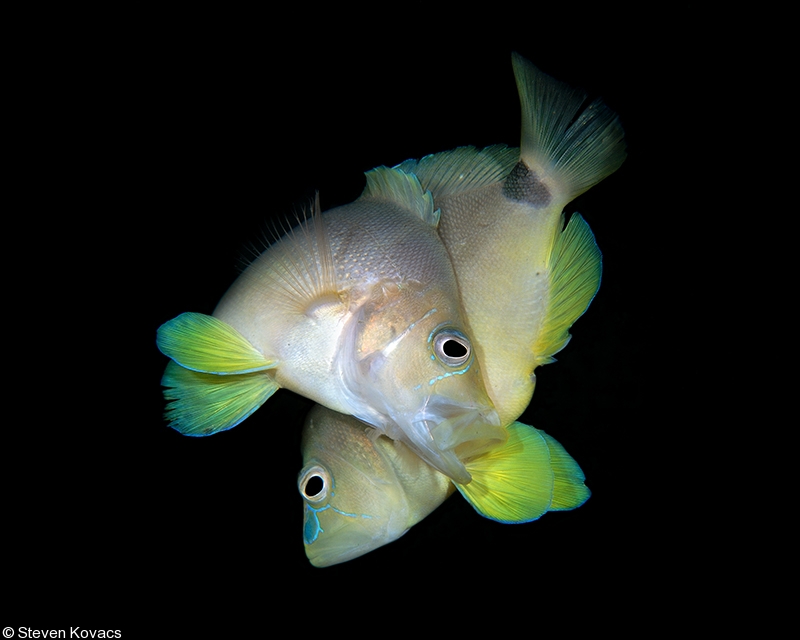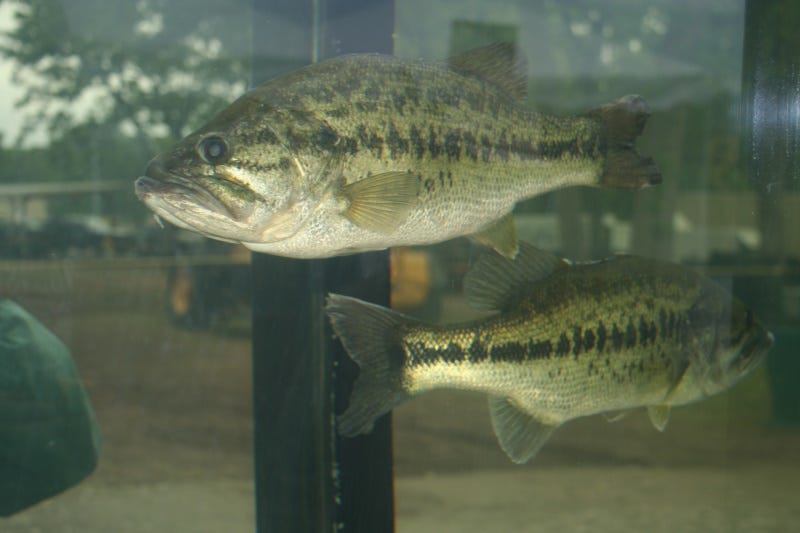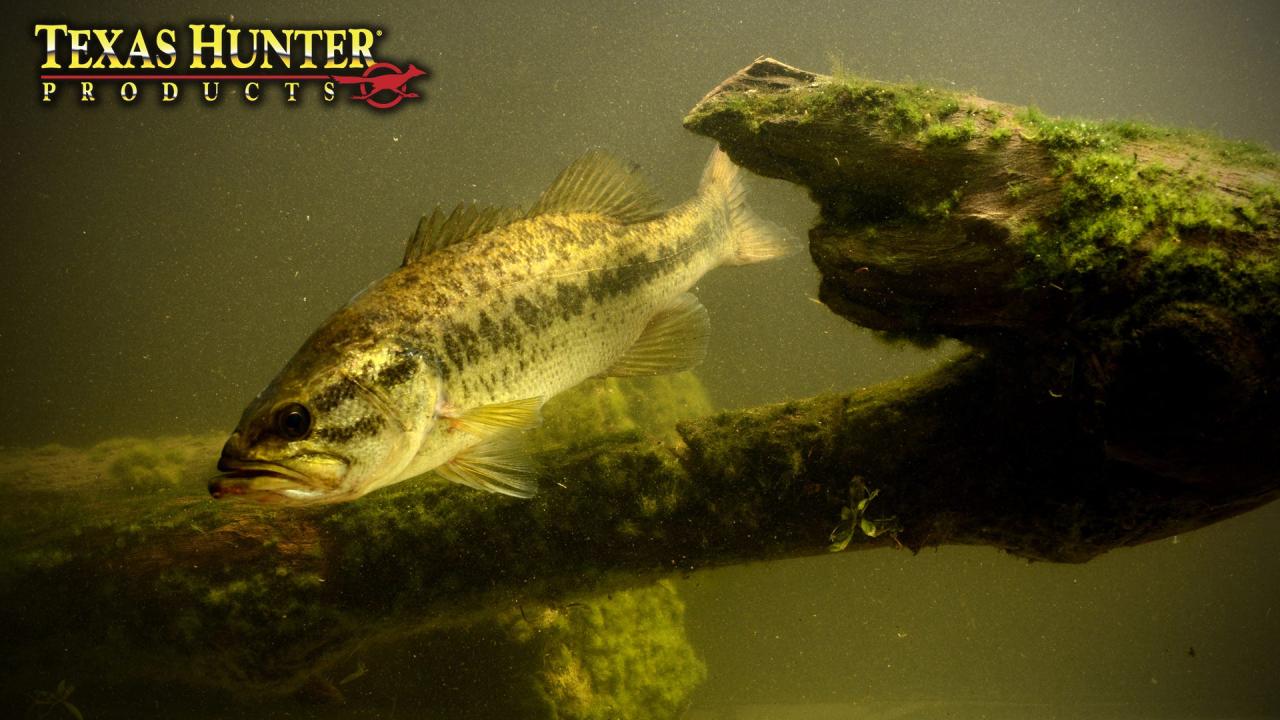Understanding fish behavior is crucial for appreciating the intricate lives of these aquatic creatures. This comprehensive guide delves into the fascinating world of fish, examining their actions in both natural habitats and captivity. From observing subtle visual cues to interpreting complex social interactions, we will explore the multifaceted nature of fish behavior.
This exploration encompasses various aspects, including the influence of natural environments, the identification of behavioral patterns in aquariums, the significance of visual and non-visual cues, and the impact of environmental factors. We’ll also investigate how social interactions and health conditions affect fish behavior, concluding with a focus on feeding behaviors.
Observing Fish in Natural Habitats
Understanding fish behavior in their natural environments is crucial for their conservation and management. Observing fish in their natural habitats allows us to understand their adaptations, social structures, and responses to environmental changes. This approach provides invaluable insights into the health of the aquatic ecosystem and the well-being of the fish populations within it.Observational studies provide a valuable means to gain insights into the complex interplay between fish species and their environment.
These studies are particularly effective in understanding how various environmental factors, such as water temperature, currents, and food availability, influence the behavior of fish in their natural habitats. By meticulously documenting their activities, researchers can develop a more comprehensive understanding of the species’ ecology and their specific needs for conservation.
Natural Environments of Fish Species
Various fish species inhabit diverse aquatic environments. Freshwater habitats, such as rivers, streams, lakes, and ponds, support a wide array of fish species adapted to these specific conditions. Marine environments, including coastal areas, estuaries, and open ocean regions, also provide unique habitats for diverse marine fish species. Each habitat presents unique challenges and opportunities, influencing the behavior and adaptations of the fish.
These variations in habitat types influence the selection of food sources, shelter preferences, and social interactions among fish species.
Factors Influencing Fish Behavior
Several environmental factors significantly impact the behavior of fish. Water temperature plays a crucial role in metabolic rate, activity levels, and reproductive cycles. Water currents dictate the movement and distribution of fish, impacting foraging strategies and predator-prey interactions. Food availability is a key driver of feeding behaviors and social dynamics. The presence of predators and competitors also shapes the behavior of fish, influencing their movements, foraging patterns, and social structures.
Examples of Fish Behavior in Natural Habitats
Salmon, for example, exhibit remarkable migratory behaviors in their natural habitats. Their upstream journeys to spawn in freshwater rivers are driven by innate migratory instincts and environmental cues. Trout, known for their agile movements, often inhabit fast-flowing streams, actively pursuing prey in the water column. Bass, ambush predators, often lurk in vegetation or near cover, waiting for unsuspecting prey to approach.
Observing Fish Behavior Ethically
Careful observation techniques are essential to minimize disturbance to the fish and their natural environment. Using binoculars or underwater cameras can provide clear views of fish behavior without causing stress. Maintaining a safe distance and avoiding sudden movements or loud noises are crucial for minimizing disruptions. Observational studies should adhere to strict ethical guidelines and avoid activities that could harm or disturb the fish population.
Comparative Analysis of Fish Behaviors
| Fish Species | Habitat | Typical Behavior |
|---|---|---|
| Salmon | Freshwater rivers, streams | Migratory, spawning, feeding |
| Trout | Fast-flowing streams | Agile, active feeding, territorial |
| Bass | Lakes, ponds, rivers | Ambush predator, sedentary, ambush |
| Catfish | Rivers, lakes, ponds | Nocturnal, bottom-dwelling, benthic feeders |
| Reef fish | Coral reefs | Schooling, territorial, specialized feeding |
This table illustrates some common fish behaviors in various habitats. It highlights the diverse adaptations and behaviors fish have developed to thrive in their respective environments. Further research can provide deeper insights into the specific behaviors of each species.
Identifying Fish Behaviors in Aquariums

Observing fish behavior in captivity offers valuable insights into their natural tendencies and how they adapt to their environment. Understanding these behaviors is crucial for maintaining the health and well-being of aquarium inhabitants. Proper observation allows for proactive identification of stress, disease, and other potential issues, enabling informed adjustments to the aquarium setup and care routine.Fish in aquariums, while displaying some natural behaviors, often exhibit variations compared to their wild counterparts.
These differences arise from the restricted environment and the absence of natural predators and prey dynamics. This necessitates a nuanced approach to understanding fish behavior in captivity, focusing on the unique adaptations and responses to stimuli within the confined space.
Common Behavioral Patterns of Captive Fish
Captive fish, despite their confined environment, display a range of behaviors, including schooling, foraging, territorial displays, and resting. Schooling behavior, a common social interaction, involves fish swimming together in coordinated patterns. Foraging behavior, the pursuit of food, can vary based on the species and the types of food available. Territorial displays, though sometimes less pronounced than in the wild, can still manifest as aggressive interactions between individuals competing for space or resources.
Resting behaviors, like seeking shelter or resting in specific areas, are also important indicators of well-being.
Key Differences Between Natural and Captive Fish Behavior
Natural behaviors in fish often involve complex interactions with the environment, including navigating varied terrain, hunting prey, and avoiding predators. In captivity, these behaviors may be simplified or altered due to the absence of these natural stimuli. For instance, a schooling fish in a natural habitat may exhibit more complex navigation patterns and display stronger social cohesion to navigate obstacles and evade predators.
In an aquarium, schooling may be less complex, yet still important for social interaction. Territorial behaviors may be less pronounced or more easily stimulated by limited space and resources in the aquarium.
Behavioral Responses of Various Fish Species to Different Stimuli
Different fish species respond differently to stimuli within an aquarium setting. For example, cichlids are known for their territorial behaviors, often reacting aggressively to perceived threats or intrusions into their territory. On the other hand, some species like goldfish may exhibit more docile behaviors, but still display schooling tendencies. Environmental factors such as water temperature, lighting, and the presence of other fish can significantly influence their behavioral responses.
Understanding these species-specific responses is essential for maintaining a balanced and healthy aquarium environment.
Importance of Providing Appropriate Enrichment in an Aquarium
Enrichment plays a critical role in understanding and supporting fish behavior in captivity. Providing a diverse and stimulating environment, mimicking natural habitats as closely as possible, is vital. This includes incorporating structures that allow for hiding places, climbing opportunities, and exploration. The inclusion of appropriate plants, rocks, and caves, mimicking the complexity of natural habitats, encourages natural behaviors and reduces stress.
For example, providing caves or crevices in the aquarium allows fish to exhibit resting and territorial behaviors in a safe and natural way.
Common Signs of Stress and Disease in Captive Fish
| Sign | Behavioral Change | Potential Cause |
|---|---|---|
| Loss of Appetite | Reduced or absent feeding | Stress, illness, or poor water quality |
| Abnormal Swimming Patterns | Erratic swimming, circling, or swimming near the surface | Stress, injury, illness, or poor water quality |
| Hiding Behavior | Spending excessive time in hiding places | Stress, fear, or illness |
| Lethargy | Reduced activity and sluggishness | Stress, illness, or poor water quality |
| Fin Rot | Frayed or discolored fins | Bacterial or fungal infection, poor water quality |
| Ichthyophthirius (Ich) | White spots on the body | Parasitic infection |
Recognizing these signs and correlating them to behavioral changes is vital for early intervention and treatment. Consistent monitoring of fish behavior is essential for maintaining their health and well-being.
Visual Cues for Understanding Fish Behavior
Observing fish behavior is crucial for understanding their needs and well-being, both in natural habitats and in captivity. A comprehensive understanding goes beyond just noting general activity levels. Key visual cues, such as body posture, fin movements, and eye direction, provide valuable insights into the fish’s current state and intentions. These cues often differ between species and situations, adding another layer of complexity to the interpretation process.Interpreting fish behavior requires a nuanced approach, considering not only the visual cues but also the fish’s surroundings and the species-specific context.
Different fish exhibit varying degrees of activity and responsiveness to stimuli. A thorough understanding of the fish’s natural environment, its social structure, and its overall health status significantly improves the accuracy of behavioral interpretation.
Body Posture
Fish body posture is a primary indicator of their current state. A hunched or flattened posture might suggest stress or illness, while an erect, streamlined posture often indicates alertness or readiness for action. This posture is often species-specific, so understanding the normal body shape of a particular fish is crucial for accurate interpretation. For example, a betta fish (Siamese fighting fish) maintaining a vertical posture with flaring fins is usually a sign of aggression or readiness to defend territory, while a similar posture in a schooling fish might simply indicate a response to the movement of other fish.
An example of a posture cue that is less readily visible is the slight lateral compression of the body in some species; this can signal a feeling of discomfort or a response to external pressure.
Fin Movements
Fin movements, especially those of the dorsal, caudal, and pectoral fins, offer significant clues about the fish’s behavior. Rapid fin flicks, or the presence of fin nipping, often signify aggression, fear, or discomfort. Slow, deliberate fin movements can indicate relaxation or exploration. The presence of injuries to fins may also impact behavior, often inducing a defensive response, affecting the fish’s overall posture.
Again, these movements should be considered in relation to the fish’s species and surroundings.
Eye Direction
The direction of a fish’s eyes is an important cue for understanding its intentions. A fish staring intently at another fish might signal aggression or courtship behavior. A fish constantly darting its eyes around its environment often indicates curiosity or alertness. Eyes constantly staring downwards might indicate a fish that is stressed or experiencing difficulties in the aquarium environment.
For example, a fish gazing at a potential predator or prey item will reveal different patterns of eye movement, providing insight into its current behavior and intent.
Visual Cues Across Species
Interpreting visual cues differs significantly between species. Aggressive cichlids may exhibit distinct postures and fin displays compared to peaceful schooling fish. Observe how each species reacts to its surroundings. The table below provides a general guide to common visual cues and corresponding behaviors across various species.
| Fish Species | Visual Cue | Behavioral Meaning |
|---|---|---|
| Betta splendens (Siamese Fighting Fish) | Flaring fins, vertical posture | Aggression, territoriality, readiness to defend |
| Goldfish | Slow, deliberate movements, slight compression of the body | Relaxation, or stress |
| Rainbowfish | Rapid fin flicks, darting movements | Fear, aggression, or excitement |
| Discus Fish | Relaxed posture, slow fin movements, direct eye contact with other fish | Curiosity, or courtship |
Environmental Considerations
The environment significantly influences fish behavior. Sudden changes in water parameters, introduction of new tank mates, or disturbances in the environment can trigger behavioral responses. A fish exhibiting a certain posture in a calm environment may react quite differently to a stressful situation. Observe how the fish’s visual cues change in response to changes in the surrounding environment.
For instance, a sudden increase in water temperature or the presence of loud noises could cause a noticeable change in fish behavior, reflected in visual cues like fin movements and body posture. A careful observer should take into account any environmental changes when interpreting visual cues.
Understanding Non-Visual Cues in Fish Behavior

Fish behavior is intricately linked to their environment, extending beyond what we can see. Non-visual cues, such as sound, smell, and touch, play crucial roles in communication, foraging, and predator avoidance. Understanding these subtle signals is essential for comprehending the complex social interactions and survival strategies of fish.
Sound Influences on Fish Behavior
Sound plays a significant role in fish communication and navigation. Different species exhibit varied responses to acoustic stimuli, which often relate to mating rituals, territorial defense, or alarm signals. Fish produce sounds through various mechanisms, including vibrations of swim bladders or specialized vocalizations.
- Fish species like cichlids, known for complex social structures, use sounds to communicate territorial boundaries and establish dominance hierarchies. These sounds can be subtle, such as low-frequency vibrations, and can also involve more pronounced vocalizations.
- Some fish species use sound to locate food sources. For instance, certain species of minnows and other schooling fish react to the sounds produced by their prey, allowing them to position themselves effectively for successful foraging.
- Predatory fish, like sharks, utilize sound to detect prey, employing specialized hearing organs to locate and track their quarry. The intensity and frequency of these sounds influence their hunting strategies.
Smell Influences on Fish Behavior
Olfactory cues are vital for fish, influencing a broad range of behaviors, including foraging, mate recognition, and predator avoidance. Fish possess specialized sensory organs, such as the olfactory epithelium, which detect and process chemical signals in the water. The concentration and types of chemicals in the water directly affect fish behavior.
- Many fish species use smell to locate food sources. The presence of specific chemical signals, released by decaying matter or live prey, can attract them to potential feeding grounds.
- Chemical signals are crucial in the reproductive behavior of many species. For instance, specific pheromones released by females attract males, influencing mating rituals and the timing of spawning.
- Predators can also utilize smell to detect prey. Chemical signals released by prey, such as the presence of specific proteins or metabolic byproducts, can guide predators to their location. This ability is vital for the predator’s survival.
Touch Influences on Fish Behavior
Tactile cues, such as physical contact with other fish or objects, play a role in fish behavior, influencing their social interactions and navigational abilities. Fish can sense these cues through specialized receptors in their skin and fins.
- Touch plays a crucial role in schooling behavior. Physical contact between fish in a school helps maintain cohesion and coordination, enabling the school to navigate and evade predators effectively.
- During mating rituals, some species use touch to communicate their intentions and establish a connection. The precise types and locations of physical contact are often species-specific and contribute to the success of reproduction.
- Fish exhibit various responses to the presence of objects in their environment. Tactile interactions with obstacles or other structures can affect their navigation, schooling patterns, and overall behavior.
Significance of Understanding Non-Visual Cues
Understanding non-visual cues is critical for comprehending the full spectrum of fish behavior and the complex interactions within their ecosystems. It provides valuable insights into their communication, survival strategies, and overall ecological roles. This knowledge can also inform sustainable fisheries management practices and contribute to conservation efforts.
Measuring and Interpreting Non-Visual Cues
Precise measurement and interpretation of non-visual cues often involve sophisticated techniques. Acoustic monitoring, chemical analysis, and tactile observation protocols are vital tools for understanding these cues. The specific methods utilized vary significantly depending on the target species and the specific behavioral question being addressed.
- Acoustic monitoring devices, such as hydrophones, can be deployed to record and analyze sounds produced by fish, allowing researchers to understand the context of their vocalizations.
- Chemical analysis techniques, such as gas chromatography-mass spectrometry, can identify and quantify chemical signals in the water, revealing the species’ use of pheromones and other cues.
- Direct observation and video recording of fish interactions can provide valuable insights into tactile cues and their effects on behavior. Careful behavioral analysis can lead to interpretations of their communicative patterns and social interactions.
Factors Influencing Fish Behavior
Understanding fish behavior requires recognizing the significant impact of their environment. Environmental factors, such as water quality, light, and pressure, profoundly influence the activities, social interactions, and even reproductive strategies of fish. This intricate interplay shapes the observable behaviors that researchers and enthusiasts alike study.
Environmental Factors and Their Impact
Numerous environmental factors influence fish behavior. These factors are often interconnected, creating complex effects on fish populations. The interplay between these elements is crucial for comprehending the intricacies of fish ecology and behavior.
Water Quality
Water quality is a primary factor affecting fish behavior. Changes in parameters like temperature, dissolved oxygen, pH, and ammonia levels directly influence fish physiology and thus their behavior. For instance, decreased oxygen levels can cause stress, leading to erratic swimming patterns and increased susceptibility to disease. Conversely, optimal water conditions promote normal behavior, allowing fish to engage in their natural activities.
- Temperature: Temperature fluctuations directly affect metabolic rates, swimming speeds, and feeding behaviors. Cold-water species, like trout, exhibit different activity levels and feeding patterns compared to warm-water species, such as bass.
- Dissolved Oxygen: Insufficient dissolved oxygen can cause stress and lethargy, leading to reduced activity and altered foraging patterns. Fish may aggregate near oxygen-rich areas or exhibit increased respiratory rates.
- pH: Changes in pH can affect fish physiology, potentially leading to behavioral alterations. Fish may exhibit avoidance behavior in water with extreme pH levels, potentially impacting reproduction.
- Ammonia: Elevated ammonia levels can induce stress and erratic swimming behaviors. Fish may exhibit increased respiration rates, and exhibit stress-related avoidance behaviors.
Light
Light plays a significant role in regulating various fish behaviors, including feeding, schooling, and reproductive activities. The intensity, duration, and spectrum of light affect fish behavior in diverse ways. For example, some species are more active during the day, while others exhibit nocturnal behavior.
- Photoperiod: Changes in day length, known as photoperiod, influence the timing of migration, spawning, and other reproductive behaviors. Salmon, for instance, migrate based on seasonal changes in light.
- Light Intensity: Variations in light intensity affect fish foraging and shelter-seeking behaviors. Fish may exhibit increased activity in areas with more light or seek shelter in darker areas.
- Light Spectrum: The specific wavelengths of light can affect the visibility of prey and predators, influencing feeding and predator avoidance behaviors. Some fish species have specialized visual systems to detect specific light wavelengths.
Pressure
Pressure variations, particularly at depth, influence fish behavior. As depth increases, pressure increases, impacting fish physiology and behavior. Fish adapted to different pressure ranges may exhibit specific behavioral adaptations.
- Depth: Deep-sea fish have adapted to the high pressure at depth and exhibit behaviors specific to these conditions. Their behaviors might be focused on finding food or avoiding predators in their deep-sea environment.
- Vertical Migration: Many fish species exhibit vertical migration patterns, moving between shallower and deeper waters. These movements are often driven by feeding opportunities, predator avoidance, and temperature regulation.
Impact on Different Fish Species
The impact of environmental factors on fish behavior varies considerably between species. Different species have evolved unique physiological and behavioral adaptations to their specific environments. For example, the tolerance levels of fish to changes in water quality, light, or pressure differ significantly, influencing their ability to survive in fluctuating conditions.
| Environmental Factor | Fish Species | Behavioral Impact |
|---|---|---|
| Water Temperature | Trout | Increased activity at warmer temperatures; decreased activity at colder temperatures. |
| Dissolved Oxygen | Goldfish | Increased respiratory rate and aggregation near oxygen-rich areas at low oxygen levels. |
| Light Intensity | Cichlids | Increased activity in areas with higher light intensity; decreased activity in darker areas. |
| Pressure | Deep-sea anglerfish | Exhibit behaviors specific to the high pressure environment; specific hunting behaviors adapted to their environment. |
Social Interactions and Group Dynamics

Social interactions are fundamental to fish behavior, shaping their lives in natural habitats and aquariums alike. Understanding these interactions, including the complexities of social hierarchies and the role of communication, provides critical insight into the overall well-being and behavior of fish within their communities. Group dynamics can significantly affect a fish’s foraging, reproductive, and defensive strategies, impacting survival and success.Social interactions are crucial for the survival and reproductive success of many fish species.
The presence of others influences a fish’s behavior in a multitude of ways. Competition for resources, mate selection, and protection from predators are all influenced by the interactions within the group. This influence can be positive or negative, depending on the specific social dynamics of the group.
Social Hierarchies and Dominance
Social hierarchies and dominance relationships are prevalent in many fish species. These hierarchies are often established and maintained through displays of aggression, such as chasing, nipping, and posturing. Dominant fish often have preferential access to resources like food and breeding territories. Subordinate fish may exhibit more submissive behaviors, such as avoiding direct confrontation. These dynamics can have profound effects on foraging patterns, stress levels, and even reproductive success within the group.
Group Dynamics and Species-Specific Behaviors
Group dynamics significantly impact the behavior of various fish species. For example, schooling behavior in fish like herring and sardines provides protection from predators due to the sheer number of individuals. This coordinated movement, synchronized swimming, and close proximity enhances their ability to evade predators. Conversely, some species, like cichlids, exhibit territorial behavior within groups, establishing dominance relationships and defending their territories against rivals.
Communication in Fish Groups
Fish employ various communication methods within their groups. Visual cues, such as body coloration changes and fin displays, play a significant role in conveying messages about aggression, courtship, and social status. Chemical signals, like pheromones, can also transmit information about the presence and condition of other fish, potentially influencing mating or aggression. Sound production, though less understood in many species, may play a part in communication, especially during courtship or alarm situations.
Unique Social Interactions and Group Dynamics
Different fish species exhibit unique social interactions and group dynamics. For example, clownfish form complex symbiotic relationships with sea anemones, with specific individuals taking on defined roles within the group. These roles are determined by factors such as size, social status, and individual experience. Other species, like certain types of damselfish, may exhibit elaborate courtship rituals, including intricate displays of coloration and movement, to attract mates.
The specific social behaviors observed in different species reflect the diverse adaptations that have evolved in response to their particular ecological niches and environmental pressures.
Fish Behavior and Health
Understanding fish behavior is crucial not only for observing their natural interactions but also for assessing their well-being. Changes in typical patterns can be early indicators of health problems, enabling proactive intervention and preventing potential deterioration. Careful observation of fish behavior allows for a deeper understanding of their overall health and well-being.
Behavioral Indicators of Health Problems
Fish, like other animals, exhibit specific behaviors associated with their physiological state. Changes in these behaviors can provide valuable clues about potential health issues. These changes may range from subtle alterations in activity levels to more pronounced disruptions in social interactions. Detecting these deviations from normal behavior is essential for prompt diagnosis and treatment.
Linking Behavioral Changes to Potential Illnesses or Stressors
Numerous factors can influence fish behavior, including illness, injury, environmental stressors, and social conflicts. A decrease in appetite, lethargy, or erratic swimming patterns can indicate underlying health concerns. Changes in social interactions, such as aggression or withdrawal from the group, might point to stress or disease. Careful observation and documentation of these changes are essential for establishing a correlation between behavior and health.
Interpreting Behavioral Changes for Assessing Fish Health
Interpreting behavioral changes requires a thorough understanding of the fish species’ typical behavior. Observing a fish’s baseline activity, social interactions, and feeding patterns allows for a comparative assessment of any deviations. Combining behavioral observations with other diagnostic tools, such as water quality testing and physical examination, can provide a comprehensive evaluation of the fish’s health status.
Examples of Specific Behaviors Signaling Health Issues
Different fish species exhibit varying behavioral patterns. For example, a goldfish exhibiting a lack of interest in food and sluggish movements might indicate a bacterial infection. Similarly, a cichlid displaying aggression towards other fish could indicate stress or a parasitic infection. In bettas, erratic swimming patterns and loss of color intensity can signal a health problem.
Table of Common Behavioral Changes Associated with Health Issues
| Fish Species | Normal Behavior | Abnormal Behavior (Potential Health Issue) |
|---|---|---|
| Goldfish | Active, curious, readily consumes food | Lethargic, loss of appetite, erratic swimming, clamped fins |
| Cichlids | Territorial, active, interacts with other fish | Aggressive towards other fish, loss of appetite, hiding, lethargy |
| Betta Fish | Active, territorial, vibrant colors | Erratic swimming, loss of color intensity, lethargy, difficulty breathing |
| Koi | Active, grazing, social | Hiding, lethargy, loss of appetite, inflamed or ulcerated skin |
Note: This table provides general examples. Specific symptoms and behaviors can vary depending on the individual fish and the underlying cause. Always consult a veterinarian or fish specialist for definitive diagnoses and treatment plans.
Feeding Behavior and Diet

Understanding a fish’s feeding behavior is crucial for comprehending its overall behavior and health. It provides insights into its natural environment, its place in the ecosystem, and its interactions with other species. Different feeding strategies are directly linked to a fish’s diet, and observing these behaviors can reveal important details about its species-specific needs. This section delves into the intricacies of fish feeding behaviors and how they reflect dietary preferences.
Importance of Feeding Behavior in Understanding Fish Behavior
Feeding behavior is intrinsically linked to a fish’s overall well-being. The way a fish hunts, captures, and consumes food reflects its physical abilities, social interactions, and even its stress levels. For example, a fish exhibiting erratic or aggressive feeding behaviors might be experiencing stress or illness. Conversely, a healthy, well-fed fish typically displays consistent and efficient feeding patterns.
Relationship Between Feeding Behavior and Diet
Different fish species have evolved diverse feeding strategies tailored to their specific diets. A carnivorous fish will employ methods for hunting and consuming other animals, while an herbivorous fish might develop specialized structures for scraping algae or consuming plant matter. Omnivores, in contrast, will utilize a mix of feeding strategies. These behaviors are adaptations that maximize energy intake and ensure survival.
Methods of Observing Feeding Behaviors and Analysis
Careful observation is key to understanding fish feeding behaviors. This includes noting the time of day when feeding occurs, the types of food consumed, the methods used to capture prey, and the social dynamics involved (if any). Detailed records of these observations, including the specific species and the habitat, are crucial for accurate analysis. Quantitative data, such as the frequency and duration of feeding bouts, can also be recorded and analyzed to draw meaningful conclusions.
This data can be used to understand if feeding behavior is consistent across individuals and populations.
Examples of Feeding Behaviors Reflecting Diet
A cichlid, for example, known for its omnivorous diet, will exhibit a variety of feeding behaviors. It might actively hunt smaller fish, consume algae, and pick at detritus. A predatory fish, such as a barracuda, will exhibit specific hunting behaviors, often involving rapid strikes and pursuit of prey. Herbivorous fish, such as certain species of parrotfish, will utilize specialized mouth structures to scrape algae off coral reefs.
Comparison of Feeding Behaviors and Diets of Different Fish Species
| Fish Species | Feeding Behavior | Diet |
|---|---|---|
| Cichlid | Active hunting, grazing, picking | Omnivorous (insects, algae, detritus, small fish) |
| Barracuda | Ambush predation, pursuit | Carnivorous (fish, crustaceans) |
| Parrotfish | Scraping algae, coral | Herbivorous (algae, coral polyps) |
| Goldfish | Grazing, consuming flakes | Omnivorous (commercial fish food, insects) |
| Pike | Ambush predation, pursuit | Carnivorous (fish, amphibians) |
Conclusive Thoughts

In conclusion, this guide provides a comprehensive overview of how to identify fish behavior, from observing them in their natural habitats to understanding their actions in captivity. By considering visual and non-visual cues, environmental factors, social interactions, and health indicators, a deeper understanding of fish behavior emerges. This knowledge enhances our appreciation for these fascinating creatures and enables more effective care and observation in both natural and artificial settings.